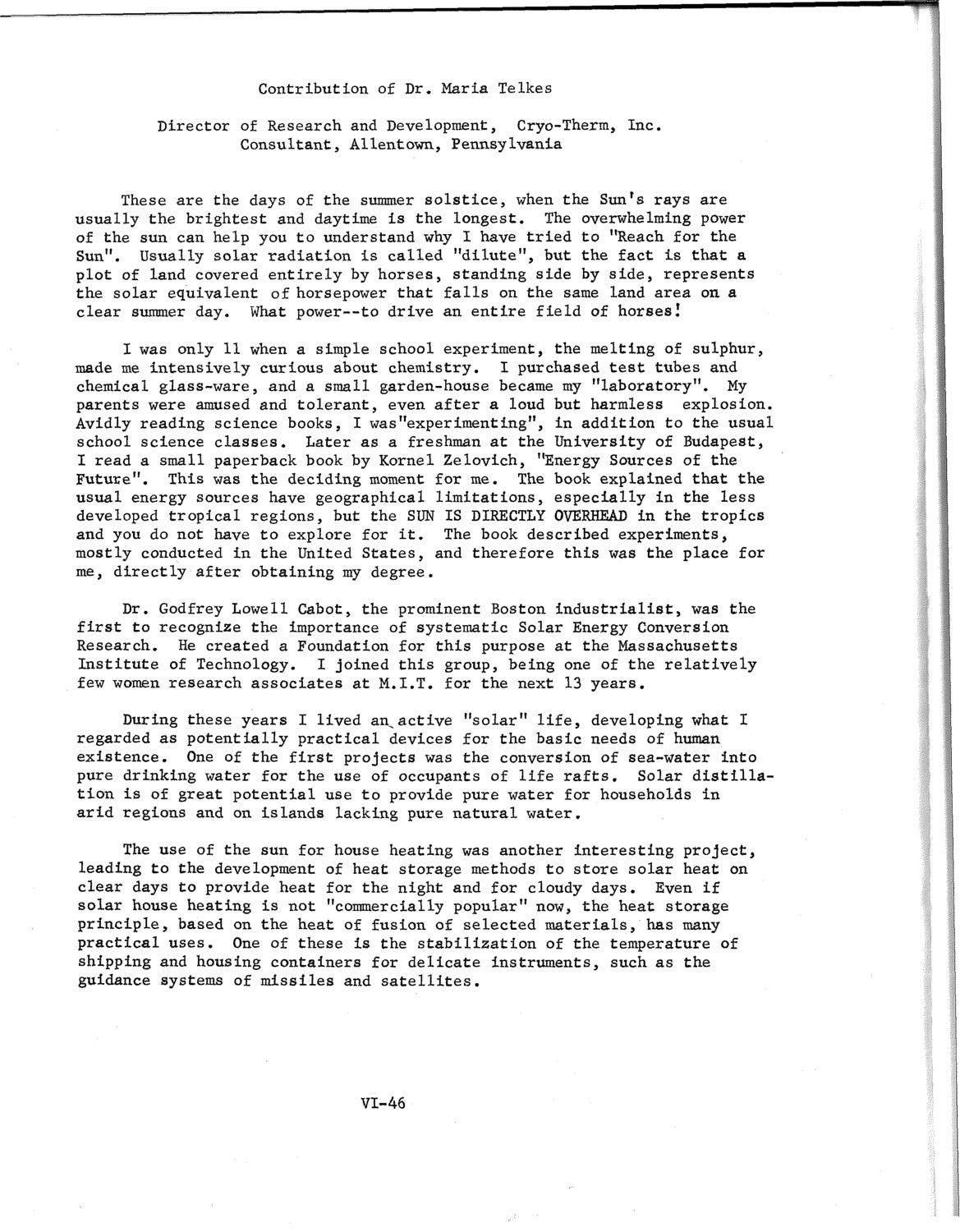| |
| |
Caption: SWE - Proceedings of the First International Conference of Women Engineers and Scientists
This is a reduced-resolution page image for fast online browsing.

EXTRACTED TEXT FROM PAGE:
Contribution of Dr. Maria Telkes Director of Research and Development, Cryo-Therm, Inc. Consultant, Allentown, Pennsylvania These are the days of the summer solstice, when the Sun's rays are usually the brightest and daytime is the longest. The overwhelming power of the sun can help you to understand why I have tried to "Reach for the Sun". Usually solar radiation is called "dilute", but the fact is that a plot of land covered entirely by horses, standing side by side, represents the solar equivalent of horsepower that falls on the same land area on a clear summer day. What power—to drive an entire field of horses! I was only 11 when a simple school experiment, the melting of sulphur, made me intensively curious about chemistry. I purchased test tubes and chemical glass-ware, and a small garden-house became my "laboratory". My parents were amused and tolerant, even after a loud but harmless explosion. Avidly reading science books, I was"experimenting", in addition to the usual school science classes. Later as a freshman at the University of Budapest, I read a small paperback book by Kornel Zelovich, "Energy Sources of the Future". This was the deciding moment for me. The book explained that the usual energy sources have geographical limitations, especially in the less developed tropical regions, but the SUN IS DIRECTLY OVERHEAD in the tropics and you do not have to explore for it. The book described experiments, mostly conducted in the United States, and therefore this was the place for me, directly after obtaining my degree. Dr. Godfrey Lowell Cabot, the prominent Boston industrialist, was the first to recognize the importance of systematic Solar Energy Conversion Research. He created a Foundation for this purpose at the Massachusetts Institute of Technology. I joined this group, being one of the relatively few women research associates at M.I.T. for the next 13 years. During these years I lived an^active "solar" life, developing what I regarded as potentially practical devices for the basic needs of human existence. One of the first projects was the conversion of sea-water into pure drinking water for the use of occupants of life rafts. Solar distillation is of great potential use to provide pure water for households in arid regions and on islands lacking pure natural water. The use of the sun for house heating was another interesting project, leading to the development of heat storage methods to store solar heat on clear days to provide heat for the night and for cloudy days. Even if solar house heating is not "commercially popular" now, the heat storage principle, based on the heat of fusion of selected materials, has many practical uses. One of these is the stabilization of the temperature of shipping and housing containers for delicate instruments, such as the guidance systems of missiles and satellites. VI-46
| |